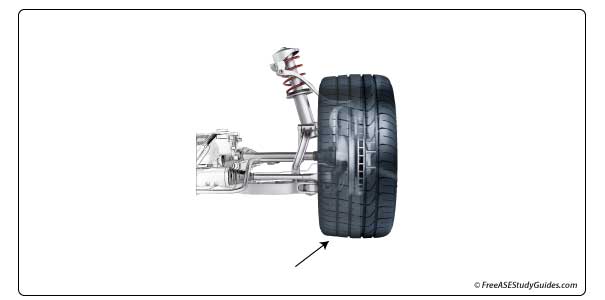ASE A4 Steering Suspension Practice Test
31. A vehicle has an SLA suspension system. The coil spring is located between the frame and the lower control arm. Technician A says to place a jack under the lower control arm and raise the tire off the ground to unload the load-carrying ball joint. Technician B says to place the jack under the frame and raise the tire off the ground to unload the load-carrying ball joint. Who is correct?
- A. Technician A
- B. Technician B
- C. Both A and B
- D. Neither A or B
32. The front tires change pitch as the vehicle travels over different road surfaces. Which of the following is causing this condition?
- A. Cupped tires.
- B. Bad wheel bearing.
- C. Excessive positive caster.
- D. Excessive negative caster.
33. The steering wheel grabs and binds only at specific points around the steering wheel’s rotation. Technician A says the steering shaft universal joint is binding. Technician B says the intermediate shaft is binding. Which technician is correct?
- A. Technician A
- B. Technician B
- C. Both A and B
- D. Neither A or B

34. The inside tread of the tire in the illustration shows excessive wear. Which of these could be the cause?
- A. There's too much positive camber.
- B. There's too much positive caster.
- C. There's too much negative camber.
- D. There's too much negative caster.
35. Technician A says parallelogram steering systems contain an idler arm. Technician B says a loose or worn idler arm will affect the vehicle's toe angle. Who is correct?
- A. Technician A
- B. Technician B
- C. Both A and B
- D. Neither A or B